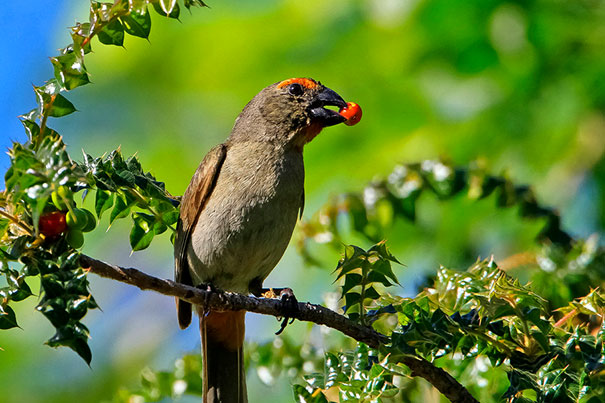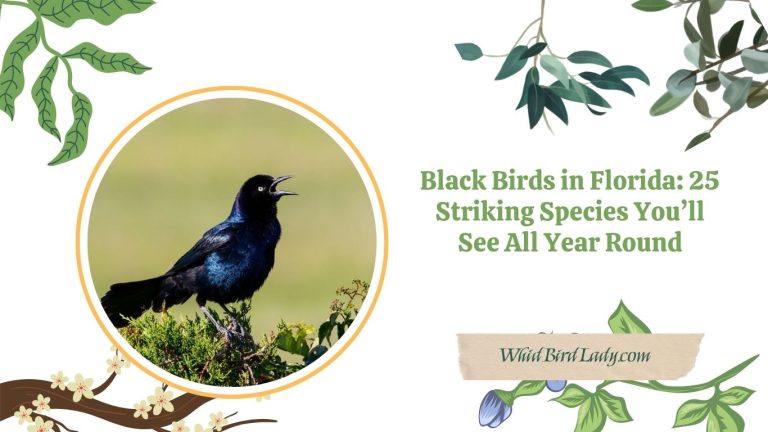Finch Beaks: The Secret Behind Their Diverse Shapes.
Finches have different beaks because of their adaptation to specific environments and food sources. Their beak shapes and sizes enable them to efficiently gather and consume food in their respective habitats.
Finches are a diverse group of birds with approximately 100 species. They have become a prime example of adaptive radiation, which is the evolution of diverse species from a single ancestral species due to the availability of new habitats and resources.
One of the most distinctive features of finches is their beaks, which vary in size, shape, and function. Each finch’s beak is adapted to its diet and environment, enabling it to eat a particular type of food, whether seeds, insects, fruits, or nectar. Understanding why different species of finches have different beaks provides insight into the evolutionary process and highlights the importance of adaptation in the survival and success of species.
Anatomy And Function Of Finch Beaks
Finch Beaks: The Secret Behind Their Diverse Shapes
Finch birds are popularly known for their cone-shaped beaks. Their beaks come in different shapes that vary across different species. The beaks can be long, short, thin, thick, sharp or even dull. But, what is the secret behind the diverse shapes of their beaks?
Definition Of The Term ‘Beak’
A beak is a protruding part of the bird’s mouth that is used for feeding, grooming, defense, and communication. It is made up of two jaws, upper and lower, that are covered with a hard keratinized layer, similar to that of our finger nails.
The shape of the beak differs across different bird species, depending on the bird’s adaptive requirement.
Description Of How The Beaks Work
The shape of a bird’s beak is mostly determined by the type of food that the bird primarily feeds on. Finches have adapted to many different environments, and they eat a wide range of food, including seeds, insects, fruits, and nectar.
Each type of food requires a specific shape of the beak that is best suited for grasping and manipulating the food item.
Thick, conical-shaped beaks are ideal for crushing and grinding seeds. Long, curved and pointy beaks help birds extract nectar from flowers. Short, flat beaks are perfect for catching insects. Dull, chisel-shaped beaks, are excellent for pecking wood to obtain insects or larva.
Comparison With Other Bird Beaks
Other bird species like woodpeckers and pelicans have also developed specific beak adaptations for their unique food requirements.
Woodpeckers have strong, long, sharp beaks that are perfect for pecking and probing in the cracks of trees to find insects and wood-boring grubs. On the other hand, pelicans have thin, long, pointed beaks, which are ideal for spearing fish in the water and draining excess water before swallowing their prey.
Birds have developed beak shapes specifically adapted to their primary needs. Finches have evolved unique beak shapes that allow them to thrive in various environments and eat a range of different foods. Each beak type is unique and remarkable, and understanding their diversity helps us to appreciate the wonder of nature.
Natural Selection Process
Finches are known for their diverse beak shapes, and each shape is linked to the bird’s survival in its particular habitat. Natural selection plays a crucial role in shaping each bird’s beak. The following points describe how survival depends on the shape and size of the beaks, examples of natural selection, and how the beaks relate to the environment.
A Description Of How Survival Depends On The Shape And Size Of The Beaks:
- Each finch species’ beak has been modified to suit their diet and lifestyle. The size, shape, and strength differ significantly between species.
- For example, the large ground finch has a massive beak to crack open hard seeds, while the small ground finch has a smaller beak that can only handle soft seeds.
- The sharp-beaked finches have adapted to feed on insects, while the leaf finch’s short, broad beak helps it consume plant leaves and flowers.
- The vampire finch, which is found on the galapagos islands, is known for its sharp, pointy beak that can penetrate other bird’s skin to drink their blood.
Examples Of Natural Selection:
- Natural selection is the process by which organisms better adapted to their environment tend to survive and produce offspring.
- In the case of finches, those with beaks suitable for their environment are the most likely to survive and pass on their genes to the next generation. Over time, the population gradually evolves to have more individuals with beaks suitable for their environment.
- For example, during the drought season on the galapagos islands, the only available food source for the finches was hard seeds. Therefore, those with larger and stronger beaks could crack open these seeds and survive. The smaller beaked finches, unable to crack them, died out.
- Another example is the medium ground finch species, which inhabit both wet and dry environments. The birds that had larger beaks were more adept at cracking tough seeds in the drier environment, while those with smaller beaks could more easily consume the softer seeds found in the wetter regions.
How The Beaks Relate To The Environment:
- The environment plays a significant role in shaping the beak size and shape of each finch species.
- The shape of the beaks depends on the food sources available to them. Therefore, if the environment changes so will the food sources available, leading to a change in the beak shape of the finches.
- The galapagos finch is one of the best examples of how the environment plays a role in shaping the beaks of the finches. The different foods found on different islands cause each species to develop a unique beak shape.
- Another example is the cactus finch, which has a long, curved beak to probe the flowers of cacti in search of nectar. These birds play a significant role in pollinating the flowers on which they depend for their survival.
Natural selection has played a crucial role in shaping the beak size and shape of finches. Their diverse beaks are unique adaptations to their environment, allowing them to consume the food sources available to them. Each finch species has evolved to have a beak that is most efficient at obtaining food in their respective habitats, assisting in their survival.
Finch Beak Diversity
Finch beaks are unique in their shape and size. The beaks’ structure enables the birds to thrive in a diverse range of environments and food sources. There are a variety of shapes and sizes of finch beaks, and in this section, we will explore the reasons behind this variation.
Explanation Of Different Shapes And Sizes Of Finch Beaks
Finch beaks come in various shapes and sizes, including wide and shallow, long and pointed, and thick and powerful. The difference in their physical appearance is due to evolutionary adaptations they have undergone over thousands of years. Some of the factors influencing beak diversity include:
- Environmental conditions
- Food sources
- Prey capture techniques
Finch beaks have adapted to these factors to survive in different habitats and locations. As a result, the beaks’ size, shape and form have evolved in response to the requirements of their respective habitats.
How It Is Measured And The Traits They Show
Measuring finch beaks is crucial to understanding how their physical adaptation influences their behavior and survival. Scientists use morphometric analysis, a technique to measure the beaks, to determine the size and shape of the different beak structures. Some of the beak traits and measurements that help us understand finch differentiation include:
- The depth and width of the beak
- The length of the beak
- The curvature of the beak
- The thickness of the beak’s base
These traits provide insights into the birds’ feeding habits and their prey capture techniques. Birds with larger beaks tend to feed on larger fruits and harder seeds. On the other hand, birds with smaller beaks specialize in feeding on smaller seeds and insects.
Comparison Of Finch Species With Diverse Beak Shapes
Finch species show unique beak shapes and structures. For example:
- The cactus finch, with its long, pointed beak, is adapted to feed on nectar and pollen from cactus flowers.
- The woodpecker finch, with its long and pointed beak, uses it to extract insects from tree bark.
- The ground finch, with its broad and deep beak, is adapted to crack tough seeds.
These examples illustrate how finch beaks can differ significantly from species to species. Finch adaptation is a prime example of how physical changes can occur over time due to natural selection pressures.
Study Of Finch Beaks
Finch beaks: the secret behind their diverse shapes.
For years, ornithologists have been fascinated with the seemingly endless shapes and sizes of finch beaks. These small beaks vary significantly from one species to the other, with some being narrow and others wide. The amazing diversity in these small structures has led to in-depth studies about their evolutionary origins.
In this blog post, we explore finch beaks and their unique characteristics, including why studying them is so important.
Summary Of Scientific Articles On Finch Beaks
Scientific research has shown that finch beaks’ distinct shapes evolved as an adaptation for different feeding techniques. The beak’s shape determines what type of food the bird can eat, and that affects a bird’s survival rate. A study conducted by grant and grant on daphne major island showed that a prolonged drought caused a shift in supplying food for the birds.
This shift led to natural selection, favoring birds with beaks that could break larger seeds, leading to an evolutionary shift in the population’s beak size.
Another study focused on how certain genes can impact beak size. In this research, ledon-rettig and colleagues discovered that the foxc1 gene regulates the amount of keratin protein in beaks. Therefore, variations in this gene among birds’ populations could account for their differences in beak size and shape.
The Importance Of Studying Finch Beaks And Its Implication
Apart from the obvious interest in learning more about these fascinating birds, understanding finch beaks’ evolution has deep implications in other areas of science. For instance, avian physiology and anatomy could help researchers develop new ways of fighting diseases using bird models.
Additionally, the significance of finch beaks in evolutionary biology means there is much more to learn about how organisms evolve.
Studying finch beaks can tell us so much about how different species can adapt to environmental changes. In areas where climate conditions are unpredictable, we can understand how animals can evolve to survive. Therefore, it is fair to say that the study of finch beaks lays a strong foundation for other research areas.
Future Research Prospect
With the knowledge that finch beaks have distinct genetic and environmental factors affecting their evolution, future research will focus on how these factors interrelate. For example, researchers could observe how food availability in different habitats influenced the evolution of different finch beak shapes.
Additionally, there is still much more to learn about the genetic regulation of the keratin in bird beaks and how that influences their evolution. Further, researchers can explore how finch beak shapes relate to the birds’ evolution. The study of finch beaks offers exciting opportunities for scientists to gain a deeper understanding of the complexity of evolution and adaptation.
Frequently Asked Questions Of Finch Beaks: Why Do Finches Have Different Beaks?
How Do Finches Use Their Beaks?
Finches used their beaks to eat their food. Each species has a unique beak shape adapted to their specific diet, such as cracking seeds, snipping insects, or piercing fruit.
How Do Finches Adapt To Different Environments?
Evolution drives finches to adapt to their environment. Over time, selective pressures determine which traits are beneficial for survival. In the case of beak shape, it’s directly related to the availability of food and competition for it.
What Is The Importance Of Studying Finch Beaks?
Studying finch beaks can provide important insights into the process of evolution and how species adapt to different environments. Additionally, research about finch beaks can help us understand the mechanisms that underlie variation in animal populations.
How Many Species Of Finches Are There?
There are around 15-20 species of finches in the galapagos islands. Each species has a unique beak shape that allows them to eat different types of food, making them an excellent example of adaptation and evolution.
Can Finch Beaks Change Over Time?
Yes, finch beaks can change over time due to natural selection and evolution. As the environment changes, and competition for resources fluctuates, the finches with advantageous beak shapes will survive and reproduce, passing on their traits to future generations.
Conclusion
It is quite fascinating to explore the world of finches and their unique beaks. These birds have evolved to have different types of beaks that enable them to thrive in various environments and feed on specific types of food. The factors that contribute to the diversity of finch beaks are many, but most of them stem from the adaptation to different ecological niches.
Whether their beaks are rounded and thick for cracking nuts, long and slender for probing flowers, or hook-shaped for tearing flesh, finches have successfully adapted to different diets and lifestyles. Studying the beak morphology and behavior of finches will continue to shed light on the intricacies of natural selection and evolution.
Furthermore, understanding these differences can help us appreciate the beauty of life and the importance of biodiversity. With this in mind, we hope to keep exploring the wonders of the natural world and learning from it to create a better future.
Published on May 21, 2023 | Last Updated on June 28, 2025 by Rifat Ahmed








